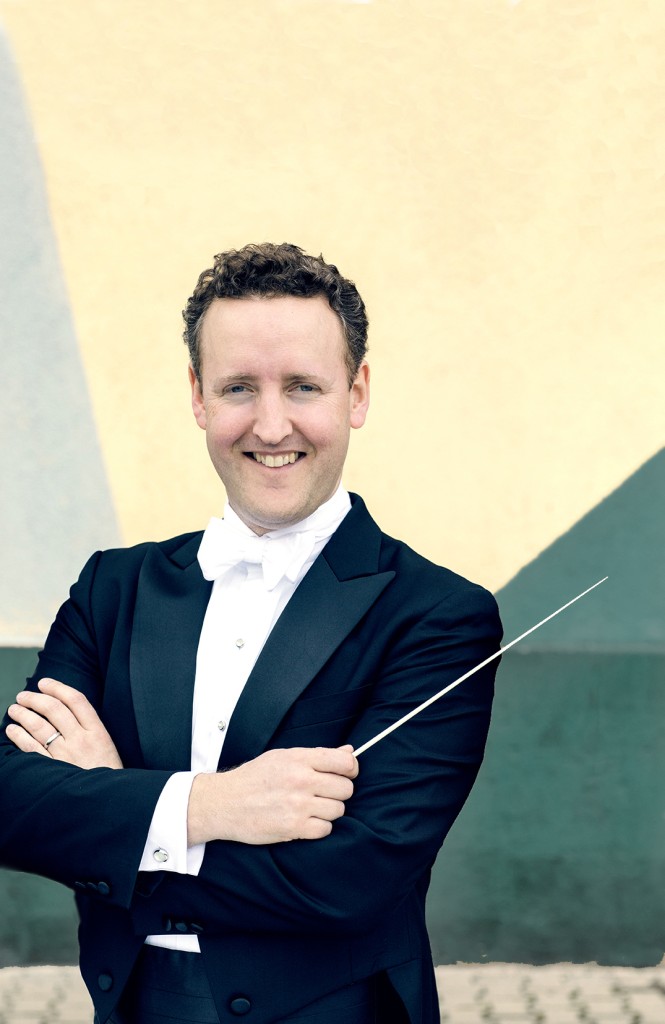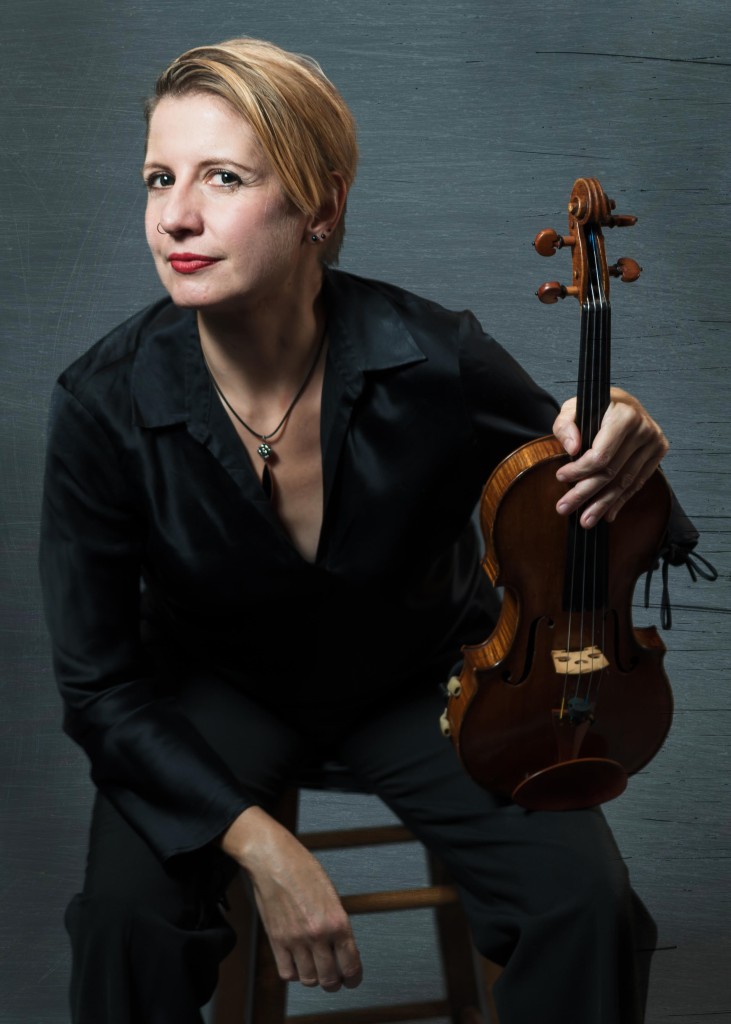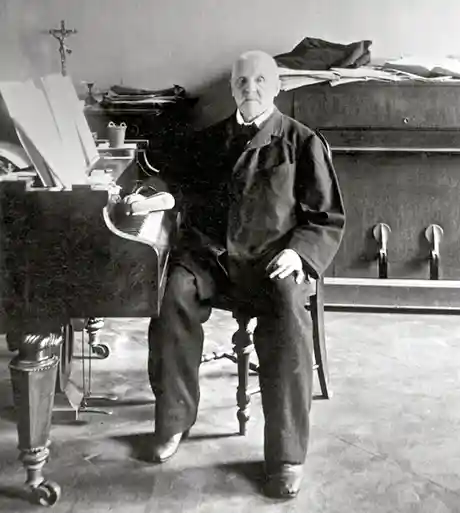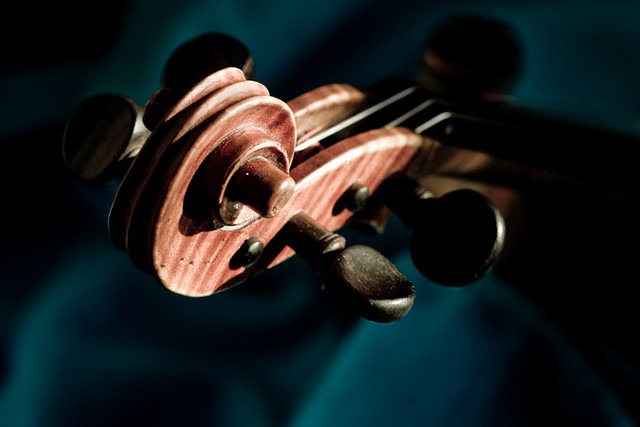Florida Orchestra
Embraces Leaner Bruckner
in Chamber-Size Seventh Symphony
April 21-22
Clearwater & St. Pete
Details here
. . .
Mention the name Anton Bruckner and you might expect crickets from friends and two-for-one tickets at the box office. Unless you’re in the big city, Bruckner is a tough sell, as his colossal, unhurried works require stamina on both sides of the proscenium.
So, in an age of snippets and sound bites, where does a monolithic symphony from nearly 150 years ago find a meaningful home?
The Florida Orchestra this week presents a novel approach to the composer’s most recognized symphony – the Seventh – by stripping it to the bone in two concerts with only a dozen musicians on stage. The point is to offer an intimate rather than intimidating experience, says music director Michael Francis. Instead of a full orchestra wrapping itself around this 65-minute opus, a rarely heard chamber version invites listeners to step inside the music.
“All the notes and harmonies are the same, you just don’t have the big number of players,’’ Francis says. “There’s something really compelling about it, and it takes you on an emotional journey once your ears get used to it.’’

The reduced arrangement is for pairs of violins and timpani; a single viola, cello, double bass, clarinet and horn; four-hands piano; and harmonium. The music was prepared in 1921 by members of Vienna’s Society for Private Musical Performances, founded by Arnold Schoenberg three years earlier with the idea of making noteworthy music accessible through smaller forces.
The emphasis on reduction made sense – the ravages of World War 1, inflation, and the Spanish flu pandemic disrupted orchestra seasons across Europe, and the society served as an outlet for works by such luminaries as Bartok, Mahler, Stravinsky and Strauss.
“A century ago, it was a way to keep music alive, to survive without the big sonic effect,’’ Francis adds. “It’s really touching that music could still continue through difficult times like the Spanish flu. This performance links us to a hundred years ago, so it feels special to be doing it.’’
Three members of the society worked on the alteration – Hanns Eisler crafted the first and third movements, Erwin Stein condensed the adagio, and Karl Rankl made adjustments to the finale. Unfortunately, the society disbanded shortly afterward, and their collaboration sat in limbo for decades. In 1994, a new source-critical edition by Alan Leighton added optional timpani.
In its original form, the Seventh is one of the grandest − and least-revised − of Bruckner’s nine symphonies, completed in 1883 and dedicated to Ludwig II of Bavaria. Arthur Nikisch conducted the premiere the following year with the Gewandhaus Orchestra of Leipzig, and it was quickly hailed as the 60-year-old composer’s finest moment.
BBC Music Magazine lists it among the 20 greatest symphonies of all time, and the venerated conductor Herbert von Karajan made it his final recording before his death in 1989.
A hallmark of Bruckner’s symphonies is harmonic spaciousness, as well as swirling and lamenting themes with massive crescendos that end in pregnant silence. In the Seventh, a profound ecstasy carries the listener through an epic series of statements and counterstatements, the first movement a model of granite strength propelled by a motif Bruckner said came to him in a dream.
The ethereal adagio in C-sharp minor follows, stretching 23 minutes and ending with a cry from the brass − the composer’s expression of grief over the passing of his idol, Richard Wagner. The scherzo, armed with rugged, earthy rhythms, is one of Bruckner’s most gripping creations.
But some listeners might wonder if the symphony can retain its weight on such a small scale. The publisher of the score, Breitkopf & Haertel, believes so, noting that “Bruckner’s compositional artistry emerges with compelling clarity in the reduced version.’’
In an AllMusic review of a 2005 recording by the Thomas Christian Ensemble, James Leonard writes that “while at first the sound of the ensemble is distracting − a horn for the main theme of the opening movement? − the cogency of the conception and the thoroughness of its execution soon still all objections.’’

Surprisingly, the instrumental parts in both versions are similar, but with so few players on deck, any mistake stands out, says Sarah Shellman, who plays one of the two violin parts this weekend.
“One difference is there’s nowhere to hide and little room for error with one player on a part,’’ she says. “Any discrepancy in pitch is instantly noticeable. Orchestral works rarely require string players to use double stops − there are enough people to cover multiple notes written in a single part. In this chamber version, one person has to cover all the notes − another intonation pitfall.’’
All this aside, just having Bruckner’s name on a program can send shivers through an orchestra’s marketing department, especially when ticket sales cover less than 40 percent of the cost of an average concert. This weekend marks only the fourth Florida Orchestra staging of the Seventh since 1972, with its last appearance 18 years ago – hardly a frequent visitor.

So, will this slim-and-trim offering, with all its transparency, turn skeptical listeners into Brucknerians? Francis believes it will. But only if they meet the music halfway, and bring a bit of patience to the concert hall.
“With attention spans today, we’re used to hearing things snappier and quicker, but with Bruckner, you live in the emotions of the moment much longer,’’ he says. “The finest art demands that we change our attention level to understand it.
“What makes Bruckner so unique is he connects the ancient and modern worlds, and probably better than anyone,’’ he adds. “When you let the sound wash over you, it’s one of the most mesmerizing experiences in music. It’s incredible. There’s nothing like hearing a Bruckner symphony.’’
. . .
April 21 at 8 pm
Church of the Ascension
701 Orange Ave., Clearwater
April 22 at 8 pm
Palladium Theater
253 5th Ave. N., St. Petersburg
Ticket information here






